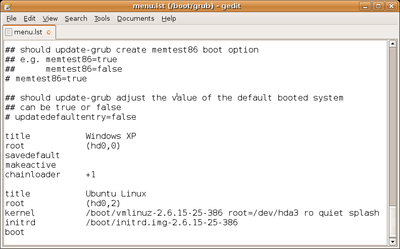In computing, configuration files (commonly known simply as config files) are files used to configure the parameters and initial settings for some computer programs or applications, server processes and operating system settings.
Some applications provide tools to create, modify, and verify the syntax of their configuration files; these sometimes have graphical interfaces. For other programs, system administrators may be expected to create and modify files by hand using a text editor, which is possible because many are human-editable plain text files. For server processes and operating-system settings, there is often no standard tool, but operating systems may provide their own graphical interfaces such as YaST or debconf.
Some computer programs only read their configuration files at startup. Others periodically check the configuration files for changes. Users can instruct some programs to re-read the configuration files and apply the changes to the current process, or indeed to read arbitrary files as a configuration file. There are no definitive standards or strong conventions.

#) are used both as documentation and as a way to "disable" the setting.